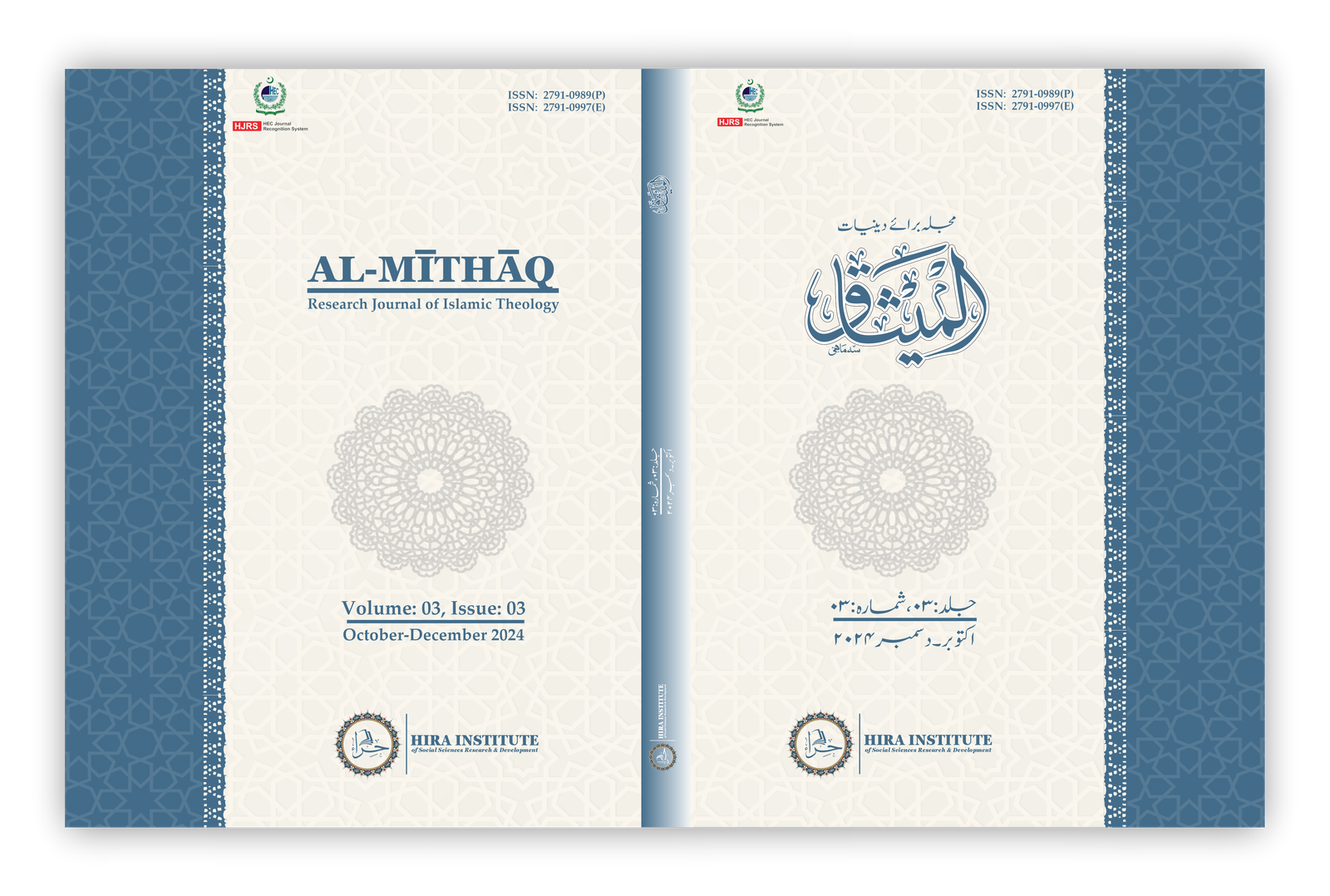The Methodology of Tuḥfat-al-Abrār by Al-Baiḍāwī: An Analytical Study
تحفۃ الابرار للبیضاوی کا منہج و اسلوب: تجزیاتی مطالعہ
Keywords:
Tuḥfat-al-Abrār, Ḥadīth, Commentary, Ḥadīth Sciences, StyleAbstract
This paper offers an introductory and analytical overview of Tuḥfat-al-Abrār, a Ḥadīth commentary written by Imām Al-Baiḍāwī (رحمه الله). Though the book is commonly known as Sharḥ al-Maṣābīḥ, several bibliographers, such as Ḥājī Khalīfa and ‘Umar Riḍa Kaḥḥālah, have referred to it as Tuḥfat-al-Abrār—a title taken from the author's own description of the book as a “gift” in the preface. The book’s authorship is authentically attributed to Imām Al-Baiḍāwī and is recognized by scholars. In this commentary, the author discusses 1599 Ḥadīths using a refined and concise style. He begins with four scholarly introductions (muqaddimāt), where he outlines key concepts. The work includes detailed discussions on the science of Ḥadīth (Uṣūl al- Ḥadīth), chains of narration (isnād), theological and sectarian issues, grammar, morphology, names of people and places, legal schools of thought (madhāhib), and positions of the Companions and Followers. Imām Al-Baiḍāwī often supports his explanations with references from the Qur’ān and Ḥadīth, and he also addresses topics of spirituality (taṣawwuf) and soul purification (tazkiyah). His approach is mainly independent and ijtihādī, though he occasionally refers to earlier sources like al-Fā’iq, Ma‘ālim al-Sunan, and al-Ṣiḥāḥ. This study highlights the key features of Imām Al-Baiḍāwī’s style and method in Tuḥfat-al-Abrār, including the book’s purpose, refined language, structured introductions, and its analytical treatment of Ḥadīth, belief issues, narrators, and sectarian perspectives. The commentary has been used as a valuable reference by many later scholars due to its depth and clarity.







